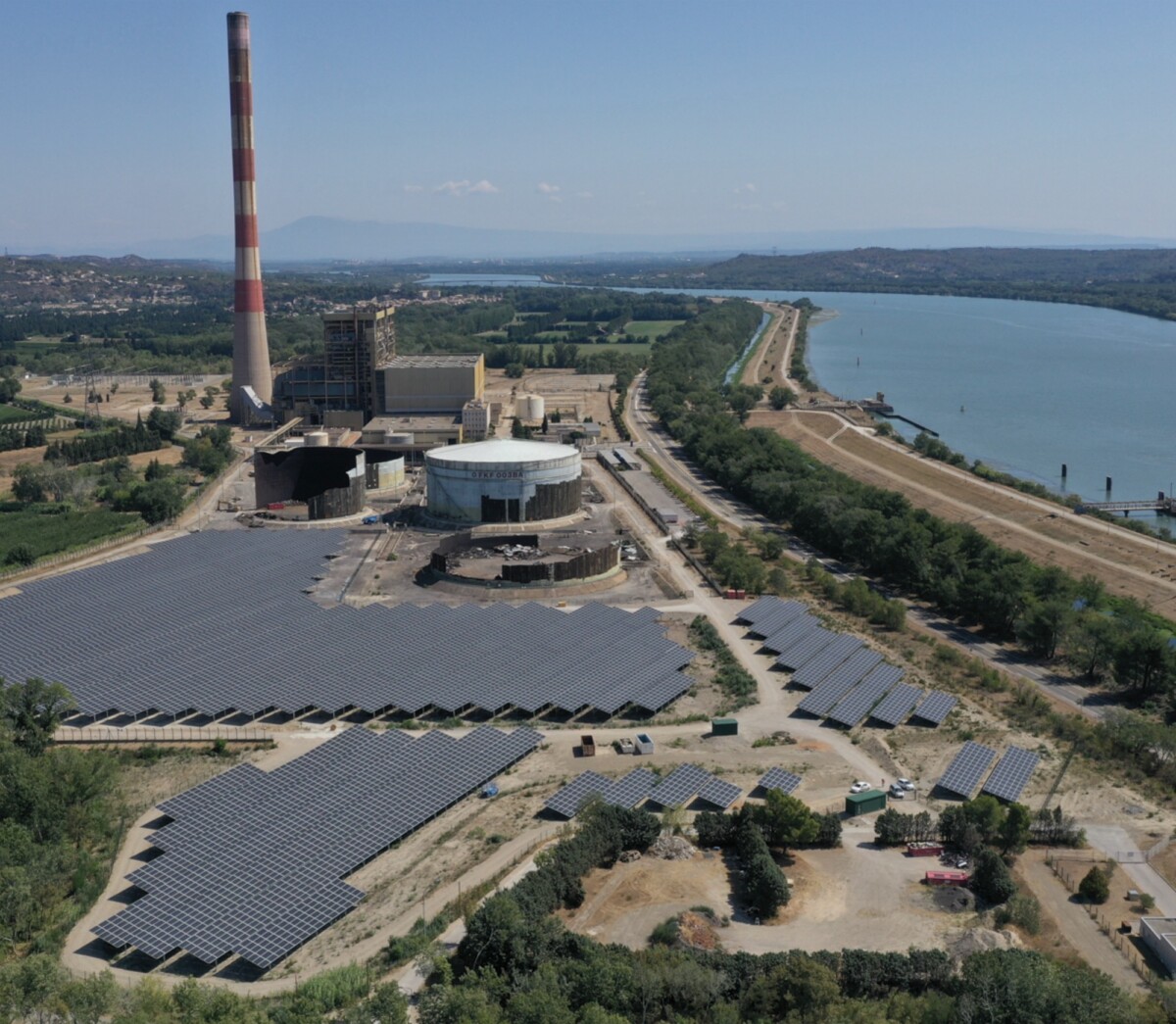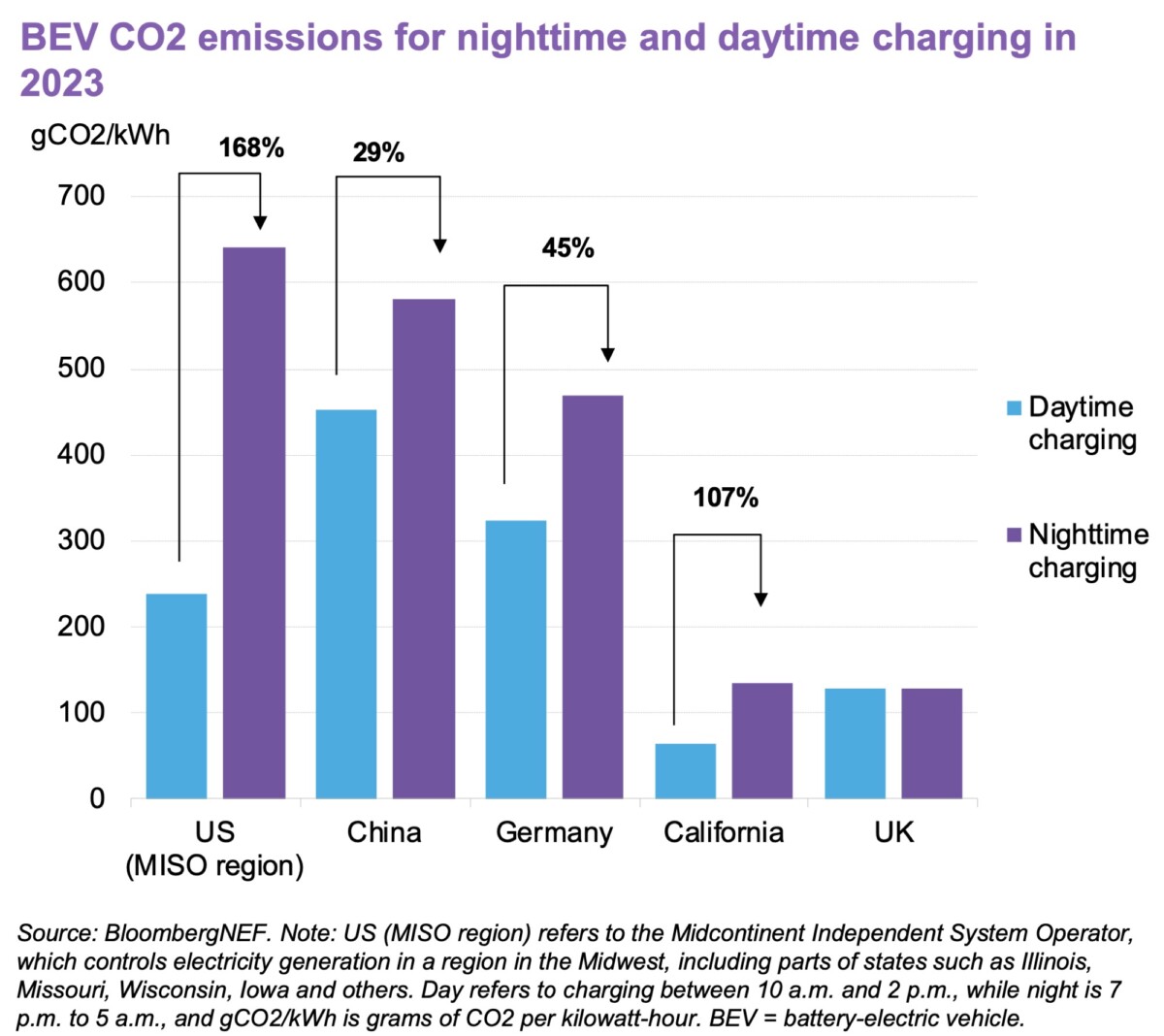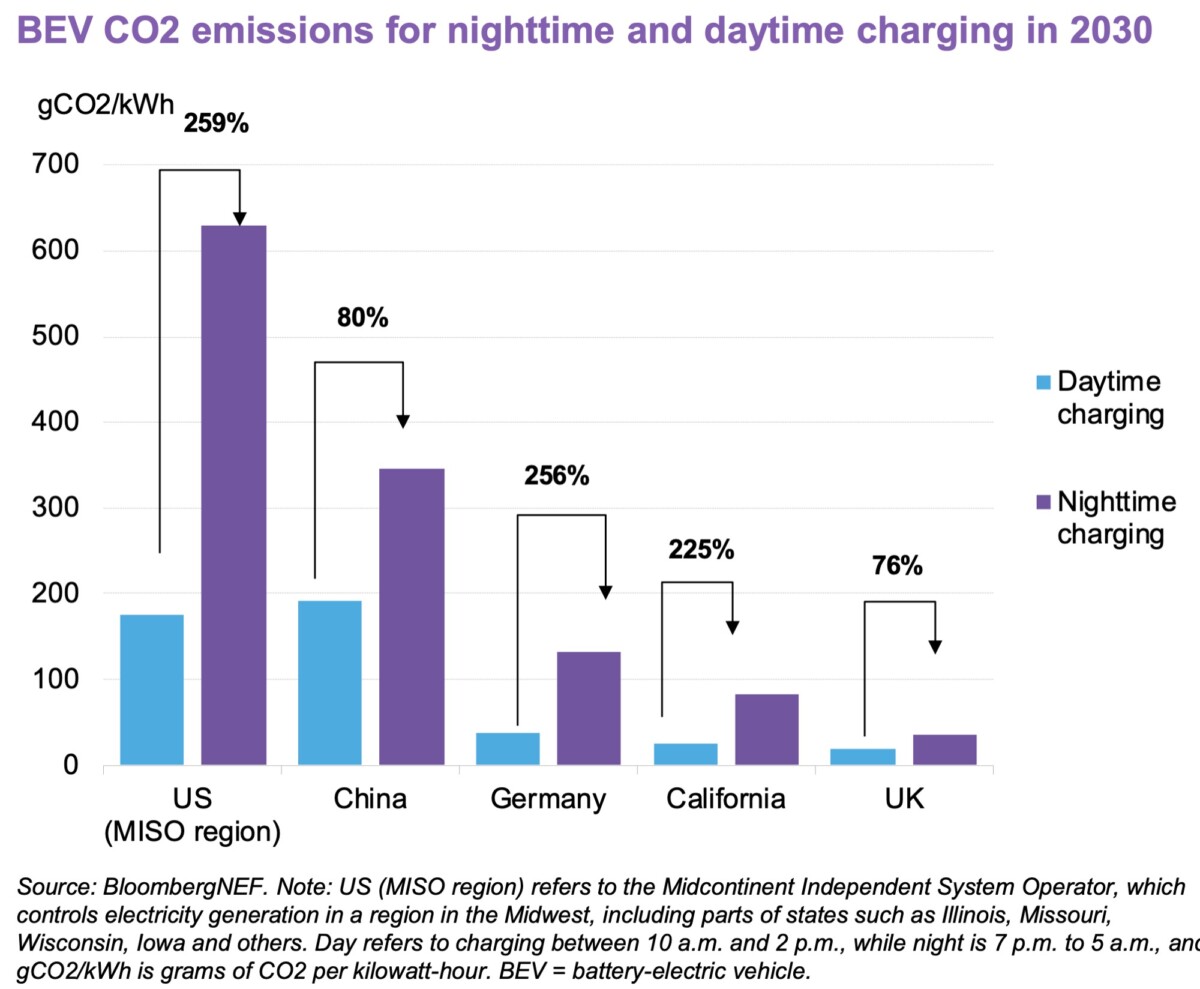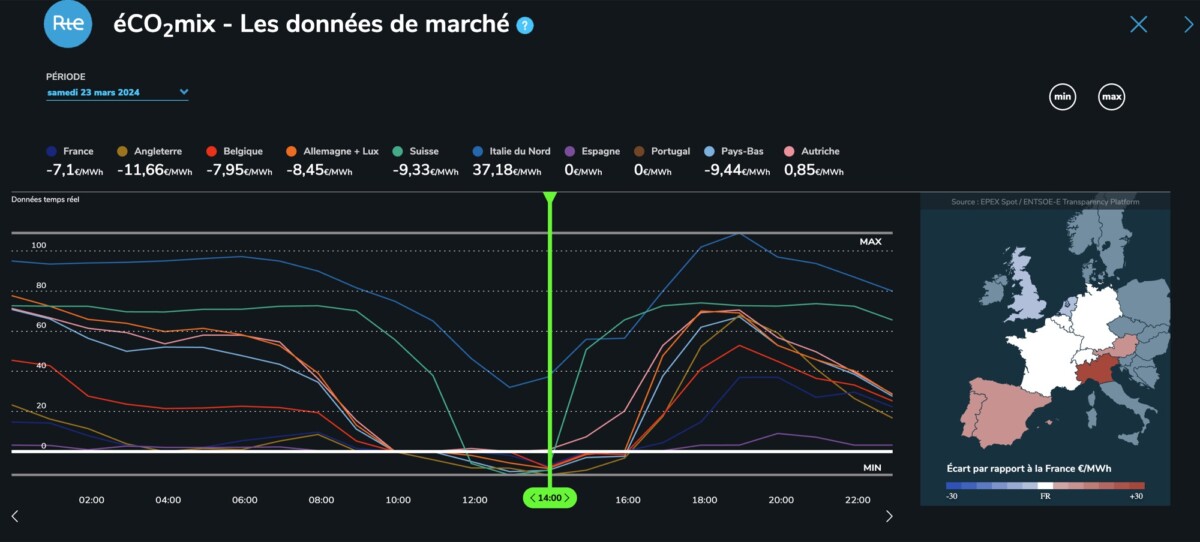What if off-peak hours at night were no longer relevant in the future? This is what a Bloomberg study reveals, at least if we consider the carbon impact linked to the use of electricity. Let’s see what could change to make driving truly emission-free.
Most electric car drivers who charge at home do so at night. Firstly, for most people, this is the time of day when their car is parked and unused, but more importantly, it is the time when electricity is cheapest.
Whether with an off-peak offer from EDF, or a contract with the Tempo option, the hours when electricity is cheaper are at night. But in a world where electricity increasingly comes from renewable energies, notably thanks to solar panels, this method may no longer be relevant. Let’s see how to combine low-cost and low-carbon charging.
Off-peak hours which are often at night: what impact in France?
At the time of writing, in France, the concept of off-peak hours is overwhelmingly at night. In this case, on most contracts, there is only one off-peak period which goes from 10 p.m. to 6 a.m. This is the case for EDF’s Tempo option in 100% of cases.
Depending on the decisions made locally by Enedis, if you have a contract different from the Tempo option, you may have an off-peak time range of 2 to 4 hours at another time of the day, for example from 1 p.m. to 3 p.m. . In other cases, the 8 off-peak hours are indeed consecutive, but begin at midnight and end at 8 a.m.
Whatever the case, during the majority of off-peak hours, one thing is missing: the sun. In other words, on the entire solar park installed in France, if there are no batteries next to the solar panels to store the energy generated during the day, no electricity can be used during off-peak hours at night.

Consequently, the solar contribution which is useful for reducing CO2 emissions per kilowatt hour produced and consumed by the end customer brings little benefit for drivers of electric cars who mainly charge at home at night.
Of course, there are other sources of renewable energy which are not dependent on the sun, such as wind power – but which is dependent on the wind – or hydraulic energy. In France, the overwhelming majority of carbon-free electricity does not come from a renewable source, but from nuclear power, which today represents more than 85% of EDF’s production. This particular case of France ultimately allows us to benefit from very low carbon intensity electricity even at night, since nuclear power provides energy throughout the day.
The problem of off-peak hours in other countries
In the study proposed by Bloomberg which we have already spoken about several times, we note that the different countries examined (Germany, United Kingdom, United States and China) present large differences in the number of grams of CO2 per kilowatt hour consumed between day and night.

The graph above shows that for the USA, China and Germany, we find significant differences in the carbon impact of charging a car during the day or at night. For example, in Germany, one kilowatt hour emits 45% more CO2 at night than during the day. The reason is of course the loss of solar contribution to the country’s electricity mix.
The biggest gap is in the USA, throughout the Midwest region, where CO2 emissions from one kilowatt hour reach more than 600 grams at night, or 168% more than during the day. You will notice that one country is an exception to this rule: the United Kingdom. The reason is to be found in the installed wind farm, which is heavily used at night, and therefore more or less allows for electricity that is no more carbon-intensive than when there is solar input during the day.
For California, the fact that there is a significant installed photovoltaic park allows for very low-carbon electricity during the day, but whose carbon impact doubles after dark. This observation is that of 2023 according to the Bloomberg study, and as everyone knows, the future of electricity tends towards renewable energies. In 2030, the different regions considered should drastically reduce the carbon impact of their electricity during the day, as shown in the graph below.

If overall, electricity in 2030 will be cleaner, the differences between day and night will be much greater. For example, while the kilowatt hour at night in Germany only released 45% more CO2 than during the day, the difference would reach 256% in 2030. Enough to push electricity suppliers to offer cheap electricity in daytime ?
Why are off-peak hours during the day important?
The availability of electricity is very uneven depending on the period, precisely thanks to (or because of, depending on how you look at things) renewable energies which are dependent on climatic conditions. In other words, if there is wind and sun, the wind and photovoltaic park will produce a lot of electricity, sometimes to the point of producing more than is needed.

And when there is too much electricity, SPOT prices (on the wholesale electricity market) collapse, as the graph above shows. As of 2 p.m., almost all of Western Europe has negative prices on the electricity market. Rather than wasting this electricity that we no longer know how to store, we should be able to financially encourage consumers to use it, especially since it is very low-carbon electricity. For example, offering very low prices for recharging your electric car during these periods would be a good idea.
In the future, if vehicles allow V2G (as with the future Renault 5 E-Tech), a whole fleet of buffer batteries will be available, which will ensure that electricity network managers can better smooth the availability of electricity. And above all, by filling all these batteries when there is excess electricity, they would ensure that they do not have to pay more for electricity at other times of the day, in addition to having an intensity minimal carbon.
If for the moment, contracts with off-peak hours mainly remain in the middle of the night, there is no doubt that the future will give way to more dynamic prices, depending on production and actual consumption at each moment. In any case, this is what would make the most sense, especially with the increasing number of electric vehicles connected to a charging station.
